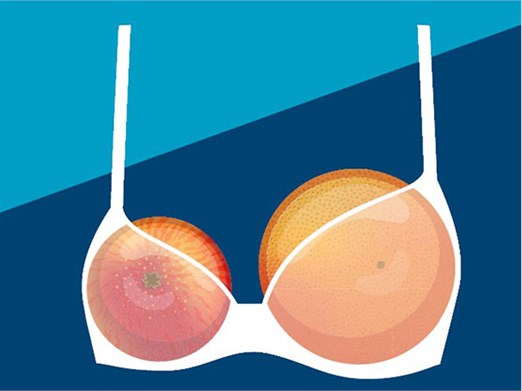Confused About All the Breast Cancer Jargon?
You’re a quick study; here are 20 breast cancer definitions youneed to know

This can be a tough time.
If you or a loved one has just received news that breast cancer is now part of your lives, you’re looking for answers while dealing with big emotions. You may be finding that the confusing breast cancer jargon feels like a foreign language course you didn’t sign up for.
You’re not alone. We’d like to offer a sampling —a small start, perhaps easier to digest than a full glossary — of common breast cancer terminology and definitions to help you sort it all out.
1. Aromatase inhibitors – These are drugs that block production of estrogen by the adrenal gland, and are used to treat hormone-sensitive breast cancer in postmenopausal women.
2. Axillary Lymph Nodes – These are the lymph nodes in the underarm, which are sometimes affected by breast cancer (see Lymphatic System, below).
3. Biopsy – A biopsy is the diagnostic procedure used to evaluate living tissue. You may have had an incisional surgical biopsy, where a surgeon cuts out part of a tumor, an excisional biopsy, where the entire tumor or abnormal area is taken out, or a needle biopsy, where tissue is withdrawn through a needle.
4. BRCA1/BRCA2 Genes (BReast CAncer genes) – By themselves, BRCA1 and BRCA2 are just human genes. They help repair DNA. However, if your BRCA1 or BRCA2 genes have a particular harmful mutation (it’s inherited), you’re at increased risk of breast and ovarian cancer. Genetic testing can help determine if you have this mutation.
5. Calcifications – As we age, women often develop tiny deposits of calcium in the breast tissue. They appear as white dots on a mammogram and are very common. If they’re clustered up in certain noticeable patterns, they could be early signs of cancer and your doctor might want to investigate with additional screening or biopsy.
6. Ductal Carcinoma – Ductal Carcinoma in situ, or “in place” (DCIS) is the most common type of non-invasive cancer, and consists of abnormal cells found in the milk ducts, the tubes that carry milk to the nipples. Invasive Ductal Carcinoma (IDC) has spread from the lining of the ducts into the fatty tissue of the breast.
 7. HER2 status – HER2 (human epidermal growth factor receptor 2) is the name of a gene that creates HER2 proteins (receptors) on breast cells. In normal breasts, HER2 receptors help control how a healthy breast cell grows, divides, and repairs itself. But in some breast cancers, the HER2 gene makes too many copies of itself and then breast cells to grow and divide in an uncontrolled way. A cancer’s HER2 status helps doctors decide how best to treat the cancer; there are targeted therapies for HER2-positive (HER2+) cancers.
7. HER2 status – HER2 (human epidermal growth factor receptor 2) is the name of a gene that creates HER2 proteins (receptors) on breast cells. In normal breasts, HER2 receptors help control how a healthy breast cell grows, divides, and repairs itself. But in some breast cancers, the HER2 gene makes too many copies of itself and then breast cells to grow and divide in an uncontrolled way. A cancer’s HER2 status helps doctors decide how best to treat the cancer; there are targeted therapies for HER2-positive (HER2+) cancers.
8. Hormone Receptors – Proteins on cells, to which hormones attach. If a cell has a lot of hormone receptors, it needs that hormone to grow. Breast cancer cells are tested for their hormone receptors, and their status is used to help choose effective hormone-targeted therapies. For example, a cancer cell with estrogen receptors needs estrogen to grow, and is known as ER+ (estrogen-receptor positive); therefore, reducing the level of estrogen in the body can prevent the cancer from growing. Breast cancers are classified as ER+ if estrogen receptors are present, PR+ if progesterone receptors are present, or hormone-receptor-negative if none of the receptors is present; in the latter case, hormonal therapy is unlikely to help.
9. Inflammatory Breast Cancer – A rare but aggressive type of breast cancer that spreads quickly and is characterized not by a lump, but by warm, tender or itchy skin, skin that appears “thick” or pitted like the skin of an orange, nipple discharge, discoloration or unexplained swelling. Visit www.ibcresearch.org to learn more.
10. Lobular Carcinoma – Abnormal cells found in the lobules, where milk is produced in the breast. Lobular Carcinoma in situ (LCIS) is confined to the lobules and therefore not immediately life-threatening. It does indicate an increased risk for developing invasive cancer. Invasive Lobular Carcinoma (ILC) has spread to the breast tissue.
11. Lymphatic System/Lymphoedema – An often-forgotten part of your circulatory system, the lymphatic system carries fluid from tissues to lymph nodes via a network of its own vessels. When the lymphatic system has been compromised by surgery and/or radiation, this lymph fluid cannot travel unimpeded, and instead spreads to surrounding tissues. The result is lymphedema, a swelling of the limbs or extremities. Some breast cancer patients develop lymphedema almost immediately after surgery, while in others, it may develop many years later or not at all. Taking care to protect the affected side of the body from needles, burns, cuts and scrapes is of utmost importance.
12. Margins – When a tumor is removed, the margin is the normal tissue that surrounded it. If you have “clean,” “clear,” “negative” or “uninvolved” margins, then no cancer cells remain visible in that tissue. If your margins are found to be “involved” or “positive,” then more surgery is needed to remove the remaining cancer cells.
13. Metastatic Breast Cancer – Breast cancer that has spread (metastasized) to other parts of the body. Also referred to as “advanced” breast cancer.
14. Neoadjuvant Therapy (Preoperative therapy) – Chemotherapy or hormone therapy used as a first treatment, usually with larger tumors, before mastectomy or lumpectomy surgery.
15.
16. Prophylactic Mastectomy (Preventive Mastectomy) – Mastectomy is surgical removal of the breast, and prophylactic or preventive mastectomy does so before cancer has been detected. Many women who learn they have a very high risk for breast cancer choose preventive mastectomy to reduce that risk significantly.
17. Prosthetic (Breast Prosthetic, Prosthesis) – An artificial breast, made of silicone, soft foam or other material, that can be worn under clothing after a mastectomy. Amoena is the originator of the silicone breast prosthesis.
 18. Radiation Therapy – The use of high-energy radiation to kill cancer cells. Radiation can be delivered by external beam (external-beam radiation therapy) or internally, known as brachytherapy.
18. Radiation Therapy – The use of high-energy radiation to kill cancer cells. Radiation can be delivered by external beam (external-beam radiation therapy) or internally, known as brachytherapy.
19. Tamoxifen – A drug which blocks estrogen action, and is used as a treatment after breast surgery to suppress ER+ breast cancer.
20. Triple-Negative Breast Cancer – Breast cancer that is ER-negative, PR-negative and HER2-negative is known as Triple-Negative. About 20% of breast cancers are triple-negative, meaning that the targeted therapies for hormone and HER2 receptors won’t be effective. Surgery, chemotherapy and radiation therapy is typically used to treat these cancers, and researchers continue to look for ways to improve treatment options.
Your local support group and your medical team are the best
Other amazing glossaries:
https://www.youngsurvival.org/breast-cancer-in-young-women/learn/glossary







